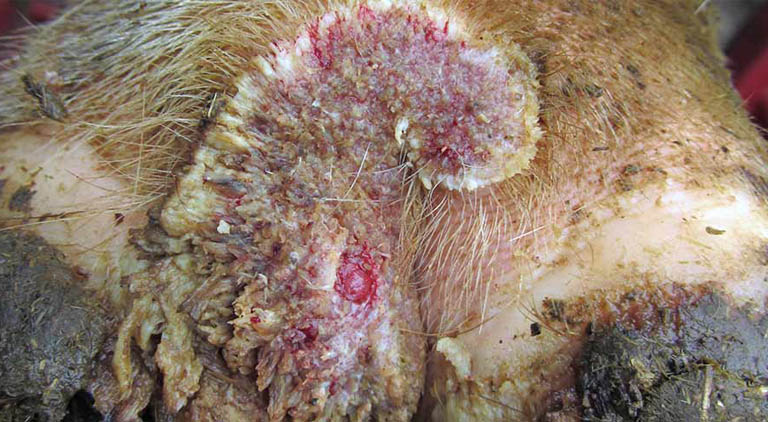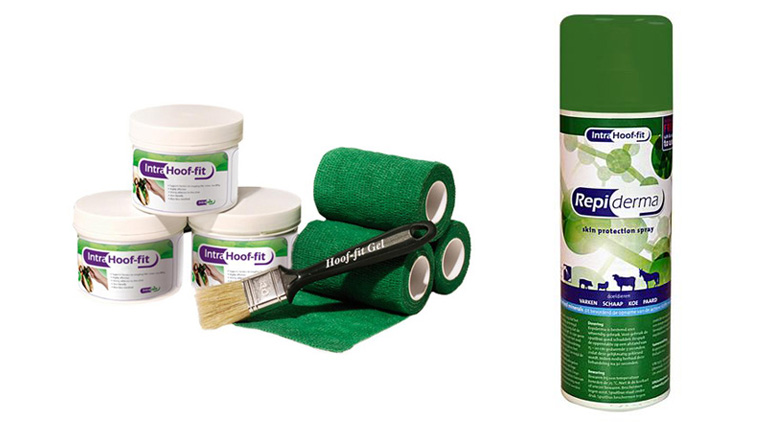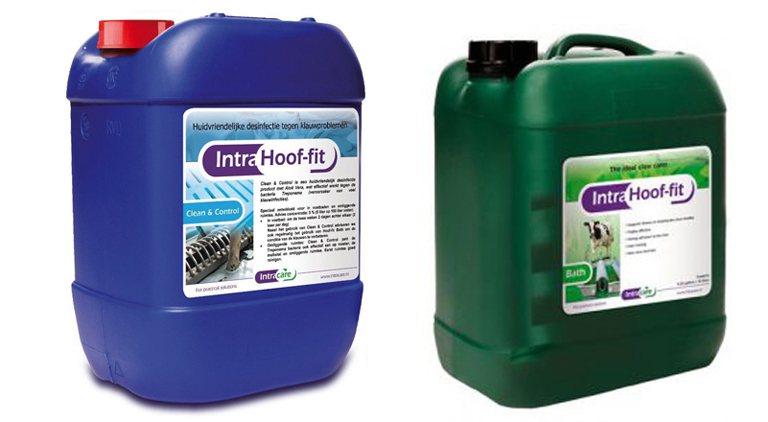
Hello farmers! This week at the Agridirect Animal Medicines Corner, our thoughts turn to digital dermatitis. We ask what it is, how it spreads and how to recognize it. We will also make some suggestions on the best ways to treat it!
What is digital dermatitis?
Digital dermatitis (DD) is a bacterial disease of the hoof first discovered in 1974. Highly infectious and hard to cure, it causes lameness in cattle and is a scourge for dairy farmers in particular. It is always distressing to see an animal in pain, and when DD starts to spread through the herd, farmers often despair of getting rid of it.
Yet digital dermatitis is more than just an animal welfare concern. It is also a major source of revenue loss on farms. Studies indicate that digital dermatitis leads to poor herd performance. It reduces milk production in lactating cows, causes fertility problems, and gives rise to additional health problems.
How does it spread?
Digital dermatitis can spread quickly and easily. When it was first discovered, studies indicated that it was linked to slurry spreading. This brought some to the conclusion that slurry was the primary reservoir of the spirochaete bacteria that bring about digital dermatitis. If that’s what you think, think again.
More recent studies suggest that slurry merely acts as the means of transmission. It is not a perfect reservoir for the bacteria. In fact, the bacteria does not survive for long on slurry at all. But it survives on the waste for long enough to spread to other animals. In reality, existing lesions are the main reservoirs of the bacteria that causes the disease. The lesions shed treponemes and this, in turn, causes spread to other animals in the herd. This transmissibility is what makes it so hard to eradicate.
Recognising digital dermatitis
Most farmers, and especially dairy farmers, are familiar with the appearance of a digital dermatitis lesion.
Usually an active lesion is red, raw and ulcerative (see image below). They are often about an inch long. You will see them on the flesh between heel and hoof, or between the hooves.
Ideally, though, you want to recognize lesions when they are in the early, developmental stage. At this point, they may be quite small. They are usually red in colour, but may not yet look “ulcerative”. Sometimes these developing lesions have a greyish tinge.
Caught at this stage, the ulcers will be easier to treat; and your chances of stopping spread are much better.
This is why it is so important to check animals’ hooves regularly. 
Getting to grips with digital dermatitis
If you are experiencing an outbreak of digital dermatitis in your herd, you should treat the infected animals frequently. The best way to identify animals needing treatment is to check each cow’s hooves individually for lesions.
This may seem like an obvious point, but a lot of farmers simply check the animals that are already lame. As you check each cow’s hooves, make a list of all of the animals that show lesions, whether active or recurrent. Mark these cattle down for intensive treatment.
For treatment of existing digital dermatitis, there are a few options.
First of all, we recommend the Repiderma spray. This is a powerful antibacterial and antimicrobial aerosol from the Intra range of products. The spray is highly effective against digital dermatitis, foot rot & other claw ailments.
Boasting zero days withdrawal for milk and meat, Intra Repiderma Spray is a curative product containing chelated copper and chelated zinc. This allows it to treat infections and aid the skin/hoof to heal itself.
Repiderma is popular with farmers because it promotes natural healing while also disinfecting.
Even better, it is easy to use. Simply hold the nozzle 15 cm above the hoof and spray.
Alternatively, you might use Intra's Hoof-Fit Gel.
Again, this product is curative, contains chelated copper and zinc and is a highly effective treatment for DD. The super-concentrated adhesive hoof gel promotes healing and lasts for 4-5 days. We sell this product with an application brush included. Again, this product is very handy for use with animals that are handled frequently. 
Prevention: the footbath
In general, farmers consider the footbath less effective at healing existing lesions than spray or gel treatments.
However, it is the ideal preventative measure. Running your animals through an appropriate footbath solution regularly will help to maintain hoof health, and prevent the onset and spread of digital dermatitis in your herd.
If you are using a footbath, you should consider using the Hoof-Fit Footbath Solution from Intra.
The Hoof-Fit Footbath Solution contains the usual blend of copper and zinc. It has curative properties. It also helps to protect against infections and aids the hoof to protect itself from spirochaete bacteria. Intra Hoof-fit should be used 2 days every 2 weeks, 2 times a day. It should be concentrated at 5% (5 litres of solution in 100 litres of water). 
If you are using footbaths to cure existing lesions, you should use Intra’s Hoof-Fit Clean and Control in conjunction with the footbath solution. Arguably a more powerful treatment than the standard solution, Intra Hoof-Fit Clean & Control is an exceptional formalin-free disinfectant which is highly effective against the micro-organisms that cause hoof problems.
Intra Hoof-Fit Clean and Control fits perfectly into the hygiene routine of the modern dairy farm. It is a gentle, responsible product which poses no risk to humans or animals.
The main problem with footbath solutions as a treatment is that they lack adhesive properties. But Intra Hoof-Fit Clean and Control avoids this pitfall. It contains a strong adhesive which guarantees a longer contact time after passing through the footbath.
Wishing you a limp-free herd this weekend!
So that’s it from us here at the Animal Medicine Corner. If you have any suggestions on the best ways to treat digital dermatitis, be sure to drop us a line in the comments section. We would be happy to include your thoughts in a revised edition of this blog. As always, the aim here is to provide the best possible information for farmers. MPG










